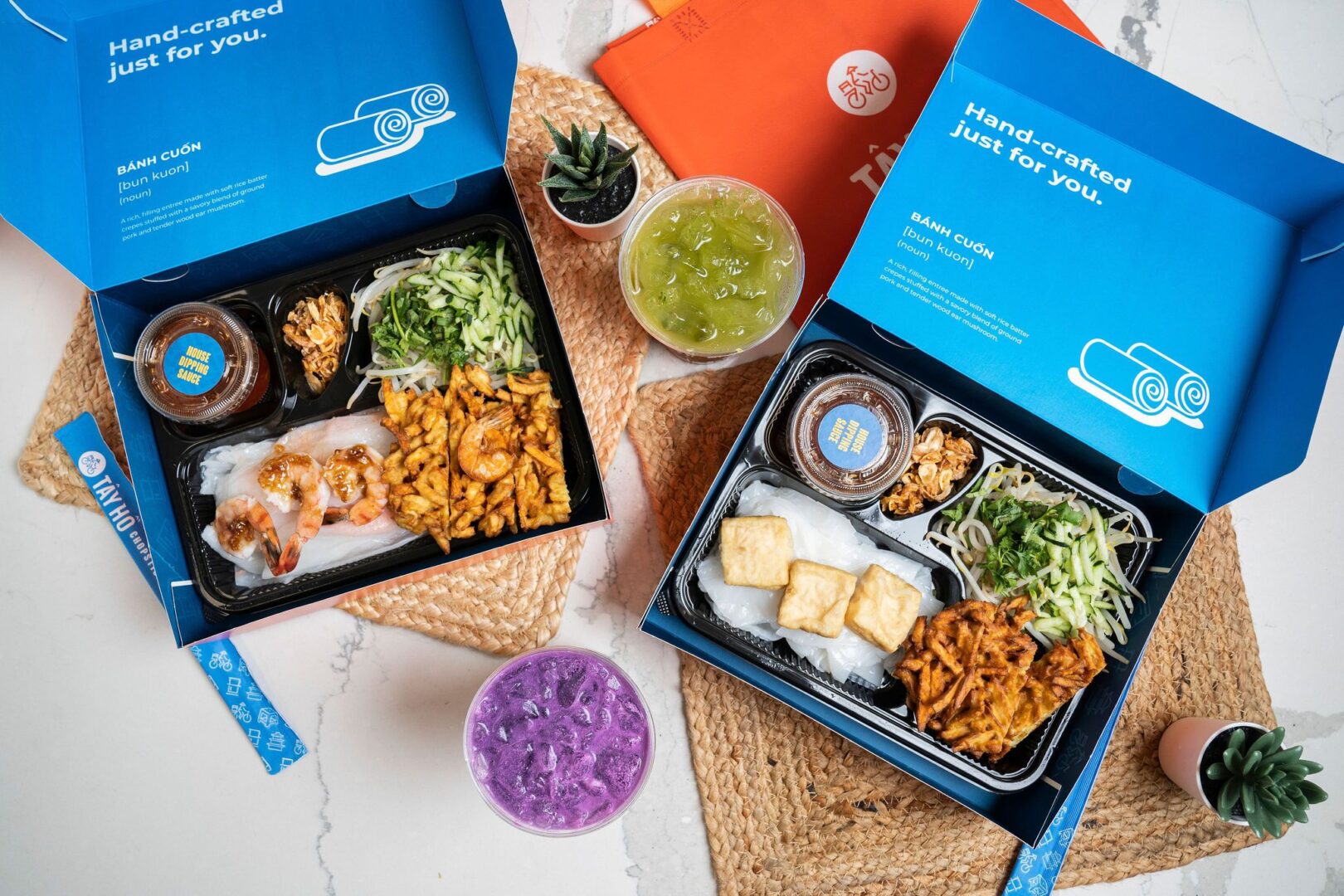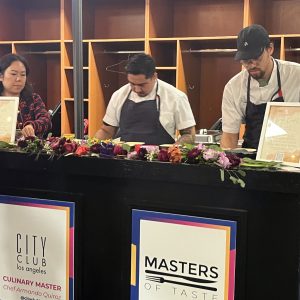 View Winners →
View Winners → 
Vivian Yenson, who was born and raised in Fountain Valley in Orange County, isn’t your average 21-year-old college graduate. In fact, there’s nothing average about this young woman who earlier this year opened her brainchild restaurant in San Gabriel – Tây Hố Takeout Restaurant. (read Brianna Chu’s food review here) And that was before she graduated from Cal State Fullerton this past May. As if that wasn’t impressive enough, a month ago she inaugurated her second restaurant in Chino Hills.
Interviewed by phone, Yenson talks about the history of the Tây Hố food family enterprise, Tây Hố Takeout Restaurants, and some of her plans to grow the business.
“My grandparents immigrated to the United States in 1980 when my dad was 10 years old. They went to Illinois when they first moved here – I don’t know why they chose Illinois – but they found the weather too cold. Besides, they were looking to settle down where there was a Vietnamese population. So they headed west to California.”

In 1986, the family opened their first Tây Hố Restaurant in Westminster – home to the largest Vietnamese population outside Vietnam. Yenson is quick to point out that at that time the Asian Garden Mall had yet to finish construction (it opened in 1987) and the Vietnamese community called Little Saigon was still in its infancy. Originating in Westminster, on Bolsa and Brookhurst, Little Saigon later spread into the adjacent city of Garden Grove.
Recognizing the needs of the flourishing Vietnamese community, her father Jayce Yenson established the Tây Hố Food Company. Today, he is the CEO of Tây Hố Restaurants and Tây Hố Food Company (West Lake Food Corporation) in Santa Ana. The food company makes cold meats – like ham – and some basic ingredients, including canned broth, and are sold to Vietnamese restaurants. Tây Hố means West Lake and it’s located in Hanoi, the capital of Vietnam. Tây Hố restaurants’ signature dish, bánh cuốn, originated in that area.
Yenson explains the rationale for taking the Tây Hố brand outside Orange County, “We currently already have a few locations in Westminster that my grandparents started and which continue to be run by my great- aunt and uncle. There’s no point opening another one in Orange County so close to where there are already existing Tây Hố restaurants – although we will revisit that sometime soon. We decided to focus on places farther away where people aren’t likely to find bánh cuốn.
“This new version is my own that’s remodel-led and rebranded with a totally new look and feel – it’s a lot more modern. Instead of staying in the Little Saigon area of Orange County, we wanted to branch out. So our first step was going to 626, the area code of the San Gabriel Valley, which has a large Vietnamese population. We then went to Chino Hills, an up-and-coming Asian community that’s growing so rapidly. Chino Hills is such a warm and welcoming community with people of all races and backgrounds that want to try new things, whereas San Gabriel is populated more by an older generation who already knows what Tây Hố is. There used to be a Tây Hố sit-down restaurant down the street from where our current location is. It was run by my great-uncle, but he recently passed away so it closed. That was also the reason I opened the first Tây Hố takeout restaurant in San Gabriel.”

A surprising revelation is that Yenson never envisioned being in this business; it was fate that intervened. She discloses, “I always thought I was going to be in the corporate world. Having grown up around my family and relatives who are in the restaurant business, I know all the stress and pressure. You go to work and you take that work home with you. I was supposed to study abroad the summer that COVID hit, but because of the worldwide lockdown, I didn’t end up doing that. Instead, I worked at West Lake Food Corporation when my dad had a corporate position available and I assumed the title Family Business Director. I helped in various projects, like restaurant franchising which I got curious about. The first thing I did on the project was R&D (research and development), specifically Vietnamese coffee.
“It was after I completed that first project that I got involved. I had a free weekend and I spent it reading about the Vietnamese coffee drink and what makes it special. I love coffee, and Tây Hố Restaurants use a very good coffee brand – Trung Nguyen – which has a slight chocolate flavor. We blend it with condensed milk and hazelnut creamer. It’s creamy and sweet with chocolate flavor, without being too sweet or bitter.”
Asked what part of her business degree she’s able to use in the Tây Hố restaurants, Yenson replies, “The most important skill I learned was project management. I worked at my dad’s company part-time while I was in college, and he wanted me to be fully involved. So I got to know people and networked with people my age. I was the president of my business fraternity and the entire College of Business and Economics. That taught me how to handle multiple projects, including marketing. While it was on a much smaller scale, I had to make sure I didn’t make mistakes. I learned how to manage my time and prioritize, in general, which I use now in the restaurant industry.”
A key decision Yenson made was adopting a takeout business model. She explains, “We launched during COVID, so we were very careful because you never know if restaurants will remain open or if another pandemic or variant will cause closures again. Even with our sit-down restaurants, though, a good portion of it is takeout business. Concentrating on takeout makes it easier for us to scale and open more since it doesn’t require much staff. Right now, staffing is so hard; takeout also reduces the amount of space and labor necessary to keep operational.”
Yenson is cognizant of the inherent challenges in the takeout business. “I understand that people enjoy a restaurant dining experience. But our main goal is to put Vietnamese food forefront in American culture, no matter how that’s accomplished. Bánh cuốn is an easy dish to eat, whether it’s takeout or sit-down. Having said that though, we’re integrating phð into our fall menu. We’re teaching our staff how to prepare it and getting all the materials ready for it. We’ll have a phð kit that includes a reusable bowl, broth, noodles, and vegetables. We’ll provide a sturdy bowl, utensils, and small containers for the sauce and chilies. There will be a small removable tray on top for the meats and the noodles so they don’t get soggy. It will be the same as eating in a restaurant even if it’s a takeout. There are limitations, but you can always evolve and adapt, and find solutions.”

Reviews about Tây Hố Takeout restaurants have been very good and mostly positive, reports Yenson. “A comment among the older generation involves the fancy packaging. However, I’m catering to a new generation of people. I use the same recipe that my grandma had used; I just made it look nicer with the packaging. I’ve read some comments that they don’t need the extra packaging and, at the same time, I’ve gotten great reviews from people who said they had never seen or heard about bánh cuốn packaged that way.
“The orange red color in our packages comes from the color of our old logo” Yenson continues. “I insisted that even if we have a new logo, I want to have the same color and look. The boxes are packed in a reusable tote that is custom-fitted for the containers – there is one inch of space between the boxes and the bag. After you take out all the boxes, the tote folds in a very different way from other restaurant takeout bags. An amazing marketing team helped design the packaging that’s distinct to Tây Hố Takeout; the sit-down restaurants have their own.”
Yenson has two younger siblings, although it’s doubtful they’ll be joining the family business. She says, “My younger sister, who’s starting college this week at UC Riverside, helped with the restaurant from time to time. But she plans to be a bio major and not stepping into the family business. My brother is much younger – he’s only 16 and still in high school, and he doesn’t know yet what he wants to do.
“There are about 20 people at the store itself and I have my cooking team members. At the corporate level, there are my dad, my COO, my Operations Manager, and myself. While I’m keeping to our family business core values, I’m not limiting the company as a strictly family operation. I want my team to know they don’t have to be blood related to be family. I see them on a daily basis and I hope they feel like they are part of my family; they are my Tây Hố family.”
Family and tradition are paramount to Asians. And it is in that vein that Yenson honors the timeless practice of preparing authentic and delicious Vietnamese street food that her grandparents and parents grew up with. She hopes that through Tây Hố restaurants’ distinctive food offerings, a new generation of food enthusiasts will make Vietnamese food a regular dining choice.









































































































